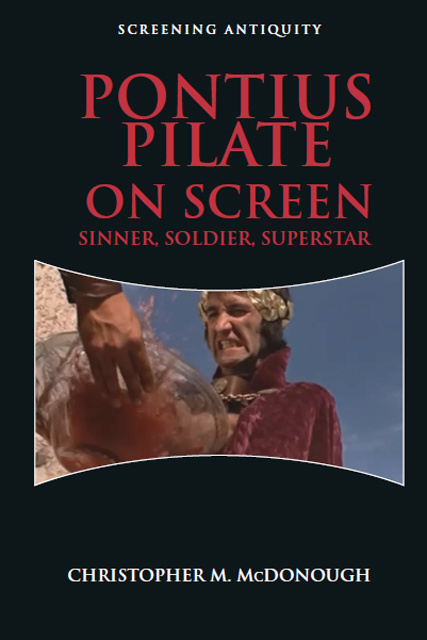Book contents
- Frontmatter
- Contents
- List of Figures
- Acknowledgements
- Series Editors’ Preface
- Frontispiece
- Prologue: ‘Do You Enjoy Being a Symbol, Pontius?’ The Trial of Pontius Pilate and Governor Collins
- 1 Quod Scripsi Scripsi
- 2 The Silent Pilate
- 3 The Roman in the Living Room: Pilate on TV in the Early 1950s
- 4 Mrs Pilate: Claudia Procula and Clare Boothe Luce
- 5 Pilate in CinemaScope, or Notes on Roman Camp
- 6 Finding Meaning in the Middlebrow: Pilate in the 1960s
- 7 What Is Truth? Pilate as 1970s Moral Relativist
- 8 Michael Palin’s Accent in Monty Python’s Life of Brian, and a Few Others
- 9 Grand and Not-So-Grand Inquisitors of the Reagan Age
- 10 ‘We at War’: Pilate for the New Millennium
- Epilogue: A Time of Handwashing
- Works Cited
- Index
2 - The Silent Pilate
Published online by Cambridge University Press: 03 June 2023
- Frontmatter
- Contents
- List of Figures
- Acknowledgements
- Series Editors’ Preface
- Frontispiece
- Prologue: ‘Do You Enjoy Being a Symbol, Pontius?’ The Trial of Pontius Pilate and Governor Collins
- 1 Quod Scripsi Scripsi
- 2 The Silent Pilate
- 3 The Roman in the Living Room: Pilate on TV in the Early 1950s
- 4 Mrs Pilate: Claudia Procula and Clare Boothe Luce
- 5 Pilate in CinemaScope, or Notes on Roman Camp
- 6 Finding Meaning in the Middlebrow: Pilate in the 1960s
- 7 What Is Truth? Pilate as 1970s Moral Relativist
- 8 Michael Palin’s Accent in Monty Python’s Life of Brian, and a Few Others
- 9 Grand and Not-So-Grand Inquisitors of the Reagan Age
- 10 ‘We at War’: Pilate for the New Millennium
- Epilogue: A Time of Handwashing
- Works Cited
- Index
Summary
I tell you, if these were silent, the very stones would cry out.
– Luke 19:40The Internet Movie Database lists dozens of separate entries for actors playing Pontius Pilate, and it is likely not complete. The film tradition about Pilate is an especially rich one, of course, because films about the life of Jesus are as old as film itself: indeed, in America, it is at the movies rather than at the theatre that the idea of the Passion as a drama was first generally formed. In Europe, of course, there had existed a long tradition of staging the death of Christ – Oberammergau’s Passion Play, in performance since 1634, is perhaps the best known, although the Benediktbeuern Passion Play can be dated to the 1200s – but such productions were strongly resisted in the US well into the twentieth century. The first theatrical production of the Passion in the US, the brainchild of the energetic young impresario David Belasco and written by the irrepressible Salmi Morse, opened in San Francisco in 1879 and, despite its great popularity, was shut down by local authorities after an outcry among influential church leaders. Attempts to restage the show the following year in New York City met with a similar reaction, and no other Passion Play found its way to the American stage for many decades afterward. Due to the fact that in its early years film was such an obscure medium, however, the sort of protests that hounded Belasco and Morse did not materialise at the movies. As Doris Alexander has noted, those who might have complained about film production ‘were sufficiently unaware of what was going on in the hardly respectable novelty of films to raise no serious opposition’.
In 1897, the Klaw and Erlanger company had released a movie called The Horitz Passion Play, the initial success of which prompted New York theatre owner Richard G. Hollaman to produce a film of the famous Oberammergau Passion Play. While purportedly shot on location in Germany, Hollaman’s movie, employing Morse’s script, was shot on the roof of New York City’s Grand Central Palace on Lexington Avenue (a fraud exposed by the New York Herald at the time).
- Type
- Chapter
- Information
- Pontius Pilate on ScreenSinner, Soldier, Superstar, pp. 27 - 43Publisher: Edinburgh University PressPrint publication year: 2022



